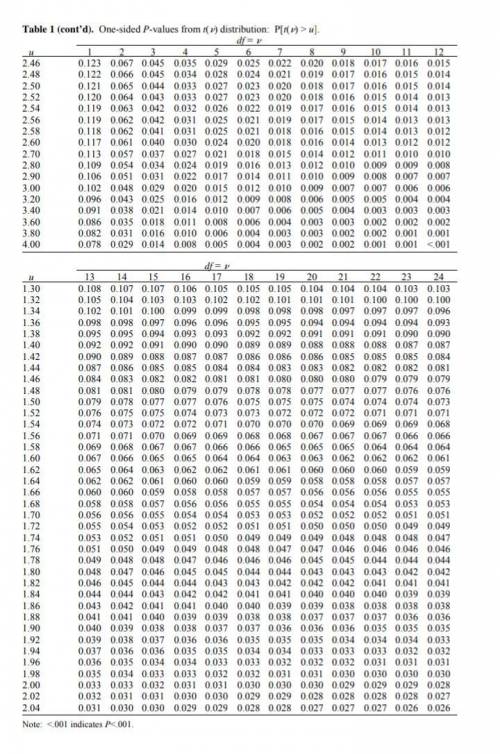
Mathematics, 28.07.2020 16:01 sahaitong2552
The true average diameter of ball bearings of a certain type is supposed to be 0.5 in. A one-sample t test will be carried out to see whether this is the case. What conclusion is appropriate in each of the following situations?
(a) n = 15, t = 1.66, a = 0.05
a. Reject the null hypothesis. There is sufficient evidence that the true diameter differs from 0.5 in
b. Reject the null hypothesis. There is not sufficient evidence that the true diameter differs from 0.5 in
c. Do not reject the null hypothesis. There is sufficient evidence that the true diameter differs from 0.5 in
d. Do not reject the null hypothesis. There is not sufficient evidence that the true diameter differs from 0.5 in
(b) n = 15, t = 1.66, a = 0.05
a. Reject the null hypothesis. There is sufficient evidence that the true diameter differs from 0.5 in
b. Reject the null hypothesis. There is not sufficient evidence that the true diameter differs from 0.5 in
c. Do not reject the null hypothesis. There is sufficient evidence that the true diameter differs from 0.5 in
d. Do not reject the null hypothesis. There is not sufficient evidence that the true diameter differs from 0.5 in
(c) n = 26, t = 2.55, a = 0.01
a. Reject the null hypothesis. There is sufficient evidence that the true diameter differs from 0.5 in
b. Reject the null hypothesis. There is not sufficient evidence that the true diameter differs from 0.5 in
c. Do not reject the null hypothesis. There is sufficient evidence that the true diameter differs from 0.5 in
d. Do not reject the null hypothesis. There is not sufficient evidence that the true diameter differs from 0.5 in
(d) n = 26, t = 3.95
a. Reject the null hypothesis. There is sufficient evidence that the true diameter differs from 0.5 in
b. Reject the null hypothesis. There is not sufficient evidence that the true diameter differs from 0.5 in
c. Do not reject the null hypothesis. There is not sufficient evidence that the true diameter differs from 0.5 in
d. Do not reject the null hypothesis. There is sufficient evidence that the true diameter differs from 0.5 in
You may need to use the appropriate table in the Appendix of Tables to answer this question.

Answers: 1


Another question on Mathematics

Mathematics, 21.06.2019 13:00
Which expression calculates the speed in meters per second of an object that travels a distance of 100 m every 20 seconds
Answers: 1

Mathematics, 21.06.2019 19:00
Use the quadratic formula to solve the equation. if necessary, round to the nearest hundredth. x^2 - 20 = x a. 5, 4 b. -5, -4 c. -5, 4 d. 5, -4
Answers: 2

Mathematics, 21.06.2019 19:40
Which system of linear inequalities is represented by the graph?
Answers: 1

You know the right answer?
The true average diameter of ball bearings of a certain type is supposed to be 0.5 in. A one-sample...
Questions




Social Studies, 11.05.2021 01:00

Mathematics, 11.05.2021 01:00

Mathematics, 11.05.2021 01:00



Mathematics, 11.05.2021 01:00


Mathematics, 11.05.2021 01:00


Computers and Technology, 11.05.2021 01:00

Social Studies, 11.05.2021 01:00










